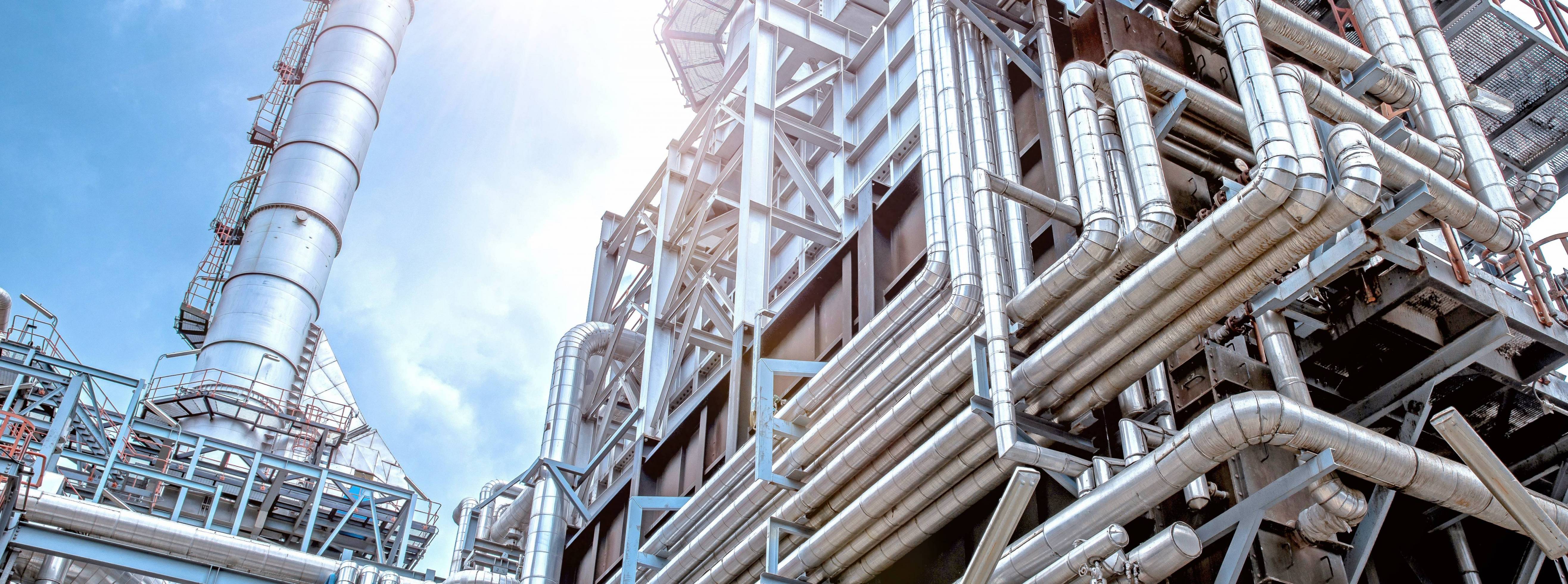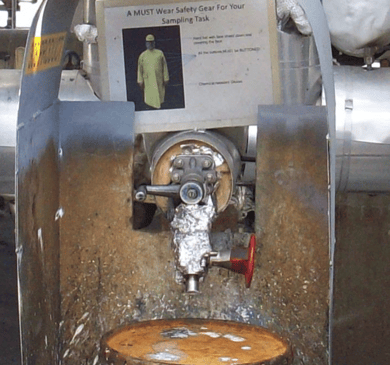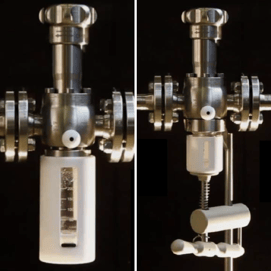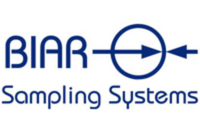

Better Liquid Sampling Systems to Prevent Heat Hazards
Thermal burns are a major safety concern to operators that need to manually sample high temperature fluids in a chemical manufacturing environment. Many high temperature processes also present other challenges such as high viscosity, extreme freezing temperatures, and corrosiveness.
Many plants currently use homemade systems, or systems that are inadequately designed for the safe sampling of high temperature liquids. These devices invariably consist of simple taps or ball valves with tubing taken directly off the process line or reactor. These types of systems, while a significantly less expensive investment initially, typically cost more to run due to higher maintenance, more downtime and increased risks.
Invariably, they must also be flushed out to guarantee a representative sample, as they feature a significant amount of dead space. This increases the risk of operator exposure, as buckets are required to contain the waste product. These systems are also prone to plugging at the outlet, which can lead to product spraying when the operator opens the valve.
Increased maintenance costs are another feature of these systems, as well as a significant drawback, because often they need to be disassembled and cleaned,

This typical homemade sampling setup makes it difficult to keep the process at a sufficiently high temperature to stop product from plugging the outlet. These types of systems present a safety hazard and are an industrial hygiene nightmare because they feature significant dead space which must be flushed out before a representative sample can be collected.
Although cooling the product before the operator takes a sample may be an option, in many cases the process demands that the sample be taken at high temperature, as time may be a factor in determining whether the process is optimal. Some batch processes require taking multiple samples, and coolers also add complexity and a higher cost to the sample system. An alternative method would be to take the sample inside a safety cabinet. If time is not a factor, the product could be allowed to cool inside the cabinet and reheated in the lab.
 A solution that addresses all these safety and sample integrity issues is installing a sample valve directly inline. A sample valve design that features no dead space would ensure that there is no temperature loss at the valve outlet, eliminating the possibility of plugging. Processes with high solidification points would require the addition of a heating jacket.
A solution that addresses all these safety and sample integrity issues is installing a sample valve directly inline. A sample valve design that features no dead space would ensure that there is no temperature loss at the valve outlet, eliminating the possibility of plugging. Processes with high solidification points would require the addition of a heating jacket.
If a cabinet is not required, an insulated bottle protector can be used with a thread adapter or bottle support with an inline valve for safe sampling of high temperature chemicals. These inline systems guarantee a representative sample without the need to flush or purge and offer a safe way to rapidly assess product quality without the long-term high maintenance costs and potentially long downtime of homemade systems. To improve the safety and efficiency of your sampling activities…
Want to learn more?


